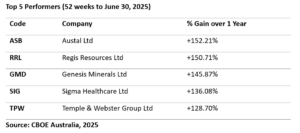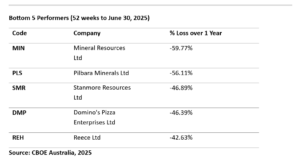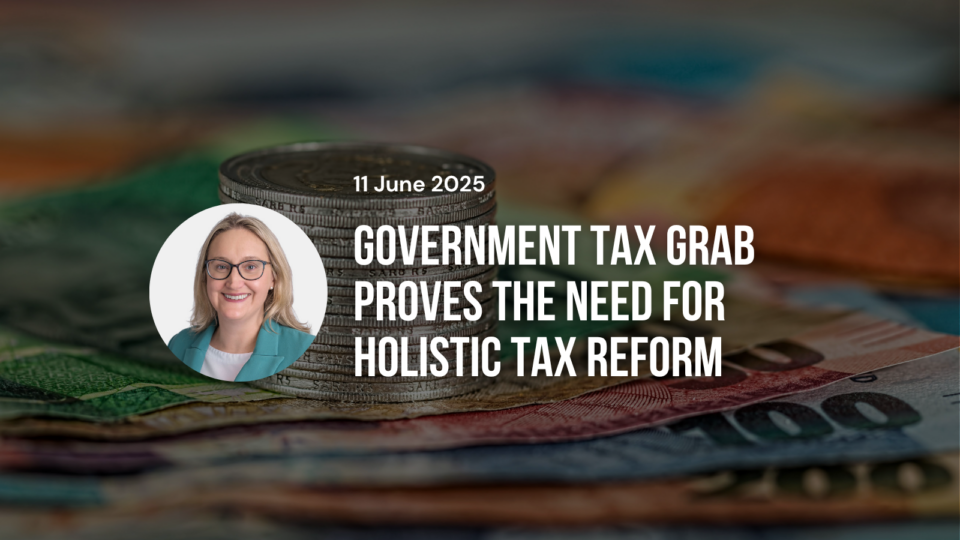

By Natalie Kulakoff, Head of Shareholder Advocacy & Company Monitoring
The Australian sharemarket delivered a strong result in the 2024/25 financial year, with the S&P/ASX 200 Index gaining 9.97% to close at 8,542.3 points on 30 June 2025.
This performance was supported by a combination of AI-driven optimism, innovation, and the index’s defensive sector profile. It came despite global uncertainty, including geopolitical tensions and renewed trade concerns.
“Total returns may have been even stronger when dividends are included—highlighting the value of having a plan, staying diversified and focusing on long-term goals,” said ASA CEO Rachel Waterhouse.
Over the year, the ASX 200 moved within a 52-week range of 7,169.2 to 8,639.1, reflecting both market volatility and resilience.
ASX 200 Sector Performance: FY 2024/25
Financials
Led by the big banks, financials outperformed expectations. Commonwealth Bank’s market capitalisation surpassed A$300 billion despite higher loan defaults and margin pressures.
Technology
One of the best-performing sectors, technology was lifted by global demand for digital solutions. WiseTech Global and Xero were key contributors.
Industrials
This sector benefited from government spending on infrastructure and sustained demand for logistics and transport services.
Energy
Oil price volatility and regulatory uncertainty weighed on energy stocks. Investor confidence was mixed across traditional energy producers.
Materials
Major miners including BHP, Rio Tinto, and Fortescue Metals underperformed as commodity prices softened and demand from China weakened.
Health Care
The sector faced regulatory pressures and market volatility, with investor caution driven by policy uncertainty and global pricing shifts.
Top 5 Performing ASX 200 Stocks in 2024/25
- Austal (ASB) – Gained on strong shipbuilding contracts and increased defence spending.
- Regis Resources (RRL) – Delivered returns driven by high gold prices and operational efficiency.
- Genesis Minerals (GMD) – Exploration success and operational ramp-up supported performance.
- Sigma Healthcare (SIG) – Benefited from a strategic merger with Chemist Warehouse and sector-wide healthcare demand.
- Temple & Webster (TPW) – Continued to expand market share amid robust e-commerce growth.

Bottom 5 Performing ASX 200 Stocks in 2024/25
- Mineral Resources (MIN) – Weighed down by falling iron ore and lithium prices, project delays and governance concerns.
- Pilbara Minerals (PLS) – Lithium price declines significantly reduced revenue and sentiment.
- Stanmore Resources (SMR) – Weak thermal coal demand pressured earnings and share price.
- Domino’s Pizza (DMP) – Margin pressure, rising costs, and international execution challenges contributed to underperformance.
- Reece (REH) – A slowdown in housing construction and inflation impacted demand for plumbing supplies.

Insights for Retail Shareholders
For ASA members and retail investors, the 2024/25 results reinforce key investing principles:
- Diversification matters – Sector returns varied widely.
- Dividends enhance performance – Investors focusing only on price movements may miss the full picture.
- Governance influences valuation – Leadership transition and oversight concerns, as seen with Mineral Resources, can affect investor confidence.
Methodology
This analysis reflects raw share price movements of Australia’s top 200 listed companies by market capitalisation as at 30 June 2025. It excludes dividends, intraday trading and corporate actions, and does not represent total shareholder returns.
General disclaimer: This information is for general informational purposes only and does not constitute financial advice or a recommendation.





